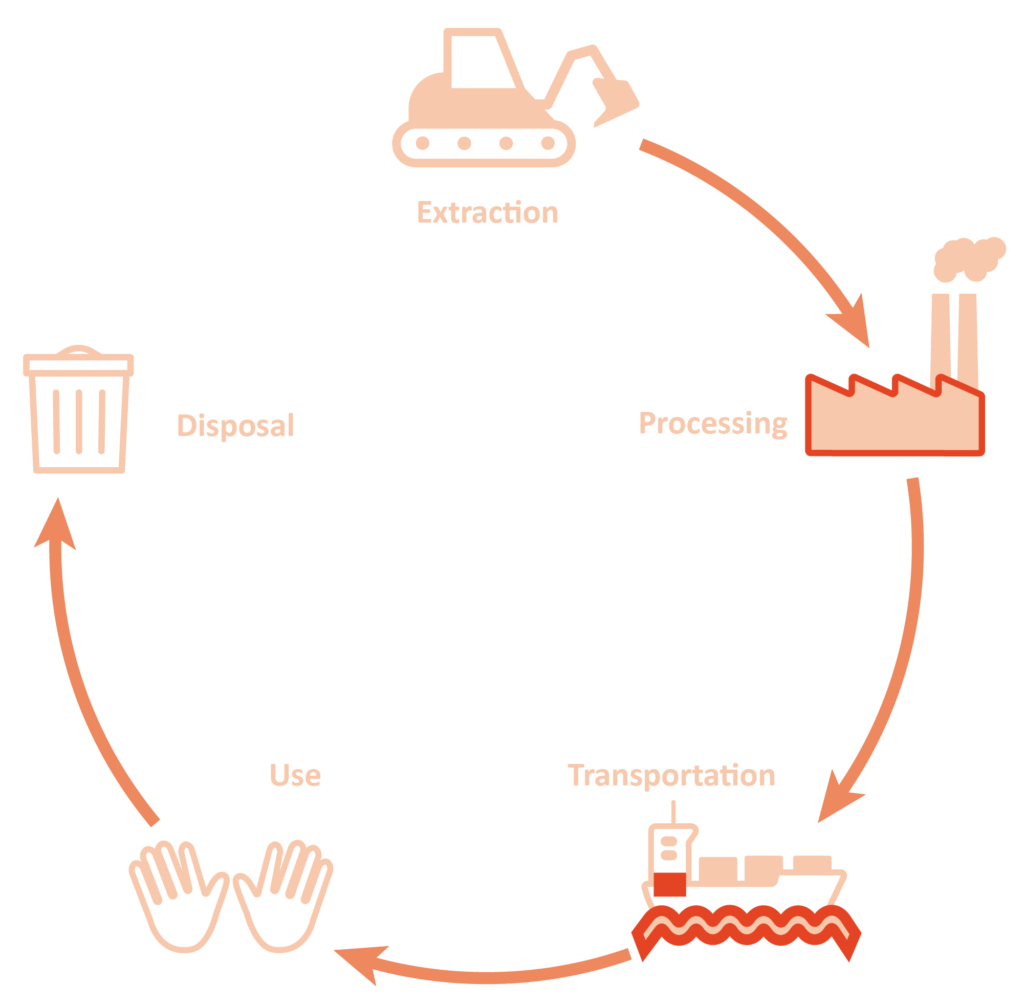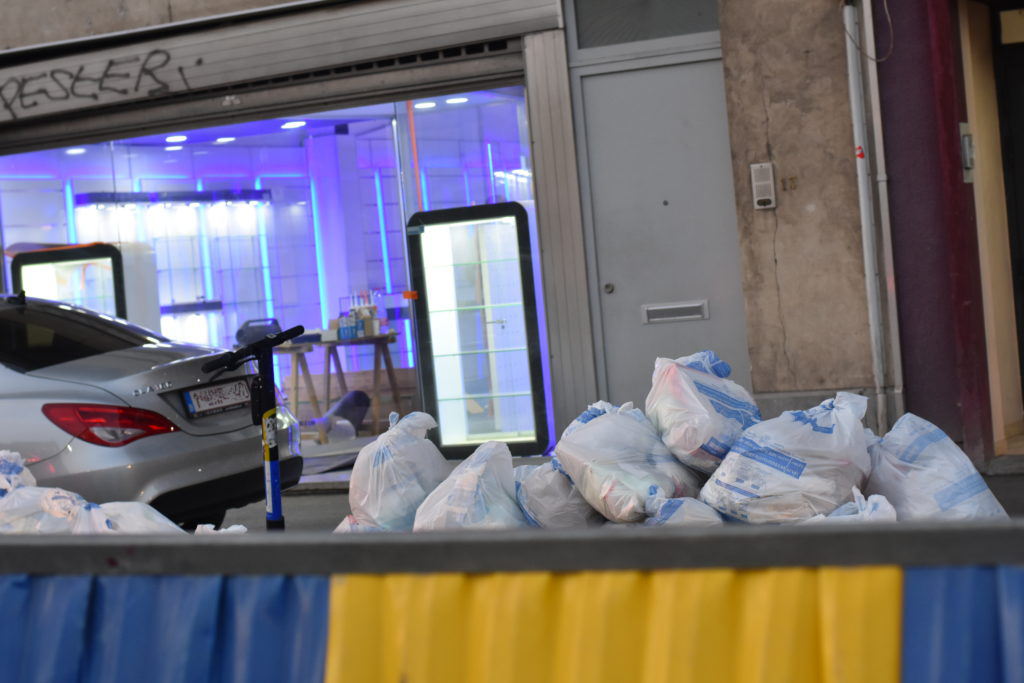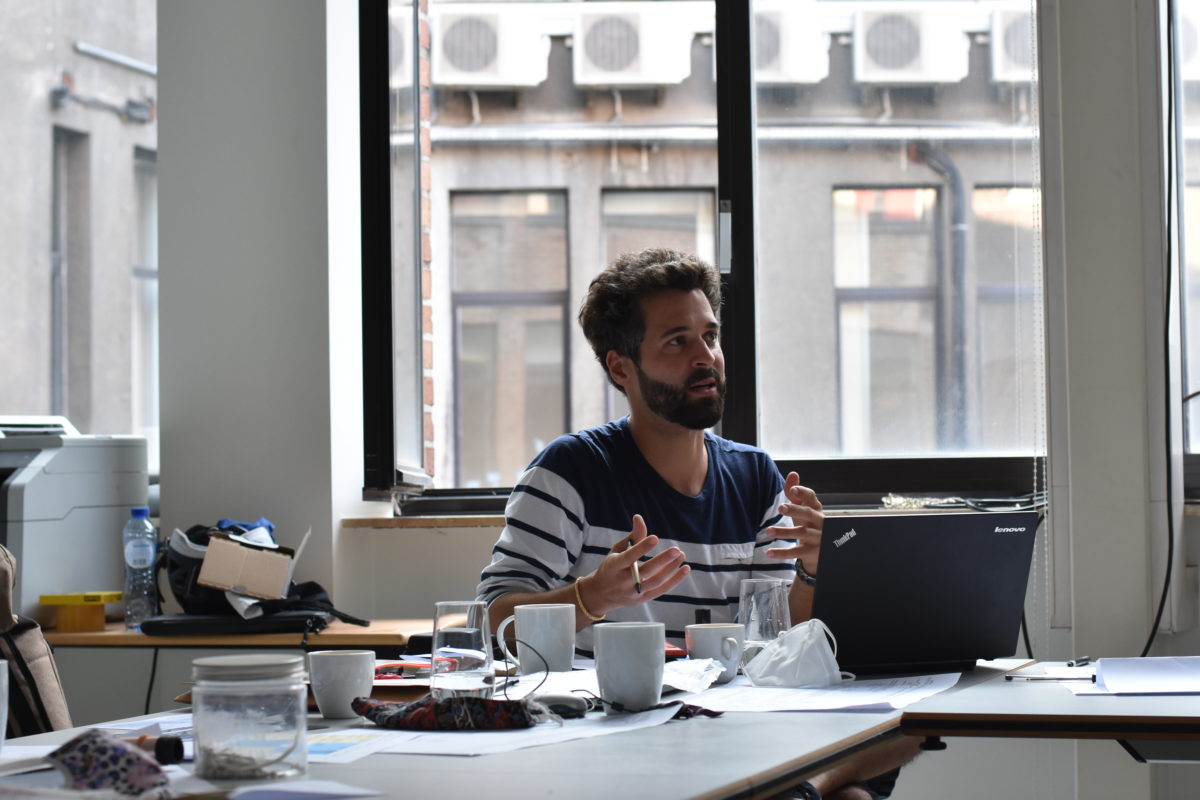René Kollmann, Co-Founder of STRATECO, a Graz (Austria) based Start-up conducts a Life Cycle Assessment (LCA) in Brussels. In this Interview, he explains, how he works on site.
Waste is probably the most visible and at the same time tiresome end product of modern-day consumerism. In Cureghem, a district-wide life cycle assessment of everyday production and/ or consumption processes aims to create awareness and create a baseline for a pro-active and self-organised management of materials such as packaging which after extraction and commodification turns into waste. Cureghem Tales talked to the Austrian expert René Kollmann from STRATECO on the challenges of calculating life cycle analyses on a district level. He takes us on a travel into the details of such analyses on behalf of Cureghem.
Cureghem Tales: Hello René. Let us start with a simple question. What is Life Cycle Assessment?
René Kollmann: Hi! Well… The purpose of a Life Cycle Assessment (LCA) is to show the environmental impact of a product, process or service over its entire life cycle. This life cycle starts in the cradle and ends either with the factory operator or – in a more comprehensive form – in the grave. All energy and material flows, all upstream and downstream processes and the emissions during production, service life and, if applicable, disposal of a product are relevant for the environmental impact. In principle, life cycle analyses are standardised in the European standard ISO 140406. However, because different methods and different system boundaries compete depending on the application, the results can vary considerably.

Does this mean that for Cureghem, too, these systemic boundaries must first be discussed? How do you define these boundaries?
René Kollmann: Exactly. Two factors are decisive for the definition of the system boundaries. Firstly, we orient ourselves to the needs of our clients. In this specific case, together with the syncity project partners, we decided that the spatial focus should be on the ecological assessment of the metabolism of the entire city quarter. In addition to this spatial confinement, there is a second limitation based on the data situation: in every Life Cycle Assessment the question of data availability and quality arises. Finally, we carry out the ecological assessment using the ELAS calculator. This tool is specifically developed for long-term energy analyses of settlement structures. However, the ELAS calculator is not suitable for the ecological assessment of production processes. This shows that each application uses its own, carefully selected indicators.

Where do you get the data from?
René Kollmann: Data acquisition is usually the most tedious and problematic task within life cycle analysis. On the one hand, the data comes from the clients. In this specific case, the data comes from the project partners ULB-IGEAT and ULB-LoUIsE, as well as the Bruxelles-Propreté. In addition, we search possible relevant databases and carry out literature searches, for example, in order to be able to simulate missing values in the available data as precisely as possible. In rare cases we also collect data ourselves.
You have carried out numerous life cycle analyses in recent years. What can the residents of the district expect?
René Kollmann: The results of the assessment using the ELAS calculator should enable residents to make scientifically sound decisions for their own community based on current figures on energy consumption, average ecological footprints, CO2 life cycle emissions and, last but not least, regional economic effects (e.g. revenues, wealth creation, imports, jobs). Based on the ecological assessment, entire urban districts can be made more socio-economically, but above all ecologically sustainable.
In other words, the Life Cycle Assessment using the Sustainable Process Index (SPI) method, shows the environmental pressures at each stage of the life cycle and maps the differences between products and processes based on renewable resources and those based on fossil resources. It also provides a good representation of the ecological hotspots within the individual process chains. On this basis, measures can be taken to make products and services more ecologically friendly. This in turn could have a long-term effects mentioned above on the local economy.
Let’s get away from Cureghem; where else can Life Cycle Assessment be used?
René Kollmann: Life Cycle Assessment can be used in many ways, as there is an international consensus that the environmental impact of products and services can only be determined in the context of a life cycle analysis; it enables an ecological comparison to be made of how this is represented economically in the price. It is particularly encouraging that more and more producers are having Life Cycle Assessments carried out for their products in order to make production more sustainable and help customers to make an ecologically sound purchase decision. Based on Life Cycle Assessment, they are converting their energy supply and increasingly opt for renewable instead of fossil raw materials.
Sounds promising. Finally, two questions. How do you come to the Life Cycle Assessment yourself and can I assess my own Life Cycle ecologically?
René Kollmann: I learned about Life Cycle Assessment at my studies of environmental systems science at the Institute for Systems Science, Innovation and Sustainability Research at the University of Graz. At the Institute for Process and Particle Engineering I then worked intensively on the subject under the direction of Prof. Michael Narodoslawsky.
René Kollmann: If you want to assess your own life cycle ecologically, I recommend to have a look at the homepage of SPIonWeb of the Graz University of Technology With a little background knowledge and the right data at hand, cities can use the free ELAS calculator. For individuals, the most interesting option remains the calculation of the personal ecological footprint.
Thank you very much for the exciting interview. We look forward to your results for Cureghem.
René Kollmann: Thank you! With every person, every company, every city that experiences Life Cycle Assessment, we are moving closer to a more ecological sustainable and resilient society. And we should pursue this goal together.
All Photos and Graphics in this Cureghem Tale have been produced by the syncity team. For further detail please contact us.
